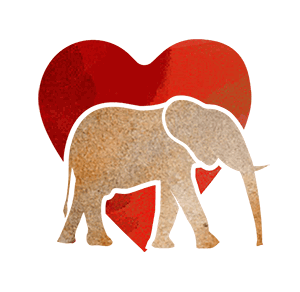Tsavo is in the grips of a brutal dry season, with intense heat and late rains making life extremely challenging for all. Kamili is an orphan who would have never stood a chance, had it not been for a fortuitous, eleventh-hour sighting.
On the afternoon of 3rd October 2021, we received a call about an elephant calf who had collapsed in Satao, Tsavo East National Park. Trevor, our field manager, happened to be doing his water rounds in the area, ensuring the boreholes we operate were in perfect working order for the area’s wildlife. While the Voi Keepers rushed to gather the necessary IV drips and equipment, Trevor headed in the direction of Satao.
En route, he came across a young elephant who was in a very bad way. Trevor was able to walk right up to her, as she was so weak that she couldn’t take more than a few, staggering steps. However, he quickly realised this was a different elephant to the one who had been reported: The initial calf was completely catatonic, while this one was standing, although it clearly took every last ounce of her strength to do so.
Now, we were grappling with two orphans who both needed urgent attention. Delays cost lives, so we mobilised additional support from our Kaluku Field HQ and sent a rescue plane to Satao. Tragically, the initial elephant was too far gone to survive and slipped away, but the second calf still had a fighting chance. The moment they arrived on the scene, the team gave her drips and shepherded her to the shade. The plane had barely touched down before it was airborne again, fighting the setting sun. She arrived at the Nairobi Nursery after dark, where our Keepers greeted her with plenty of water, supplements, fresh greens, and the all-important drips.
These rapid response decisions saved Kamili’s life. In drought victims, an hour can make the difference between life and death. Even once she was at the Nursery, we struggled to bring Kamili back from the brink. It took weeks of painstaking, intensive care, but she eventually made a recovery. She is still very thin, but her cheeks and belly are filling out every single day. Equally important, she is regaining her spirit. Kamili is a delightful little elephant, with extremely expressive eyes.
While we will never know the exact circumstances that left her orphaned, her herd was likely forced to leave her behind when she no longer had the strength to go on. Now, Kamili will never be left behind again. She is still quite shy and doesn’t approach others unless they come to her. Fortunately, our Nursery herd is an outgoing bunch, so everyone has been jostling to befriend Kamili. Kindani and Kinyei have been particularly welcoming to the new girl. While we mourn the other Satao orphan who didn’t make it, something positive came out of that day: Had it not been for Trevor’s chance encounter, Kamili wouldn't be alive today.


























